This is our go to recipe when we want to impress a dinner guest! Maine lobster meat is tossed in a rich, buttery, sherry saffron sauce. Then, the saucy lobster is spooned over creamy, Southern-style grits!
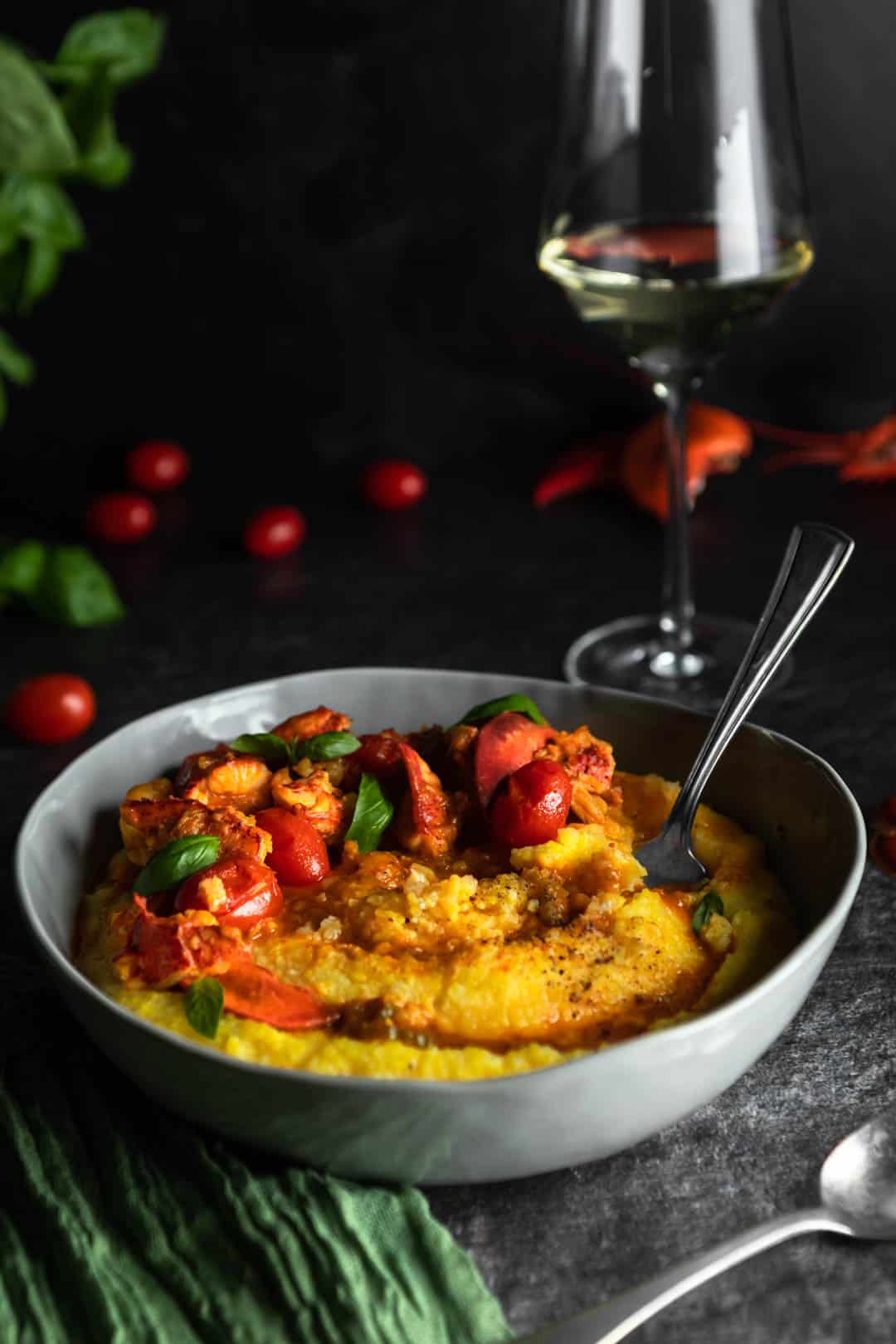
Everyones loves a good ol’ Southern style shrimp and grits but this recipe takes a comforting classic to a whole new level! The dish is finished with fresh basil and best served amongst friends with a glass of white wine! So delicious!
Serve this meal with Arugula and Prosciutto Salad for a light and bright appetizer!
Jump to:
How To Make Lobster & Grits
This recipe is easy to do but takes a little planning ahead of time! This recipe is prepared in four stages. If it is convenient, you can prepare the lobsters and stock one day ahead of time!
- Parboil and shell the Maine lobsters. Chop and refrigerate the lobster meat. Save all of the shells and bodies for stock!
- Prepare the Lobster Stock. This is the most time-consuming step but it’s mainly downtime. The lobster stock is what gives this recipe all of it’s intense lobster flavor!
- Prepare the grits (AKA polenta - read more about Grits Vs. Polenta below!)
- Make the Lobster Saffron Sauce. Serve over prepared grits. Garnish and enjoy!
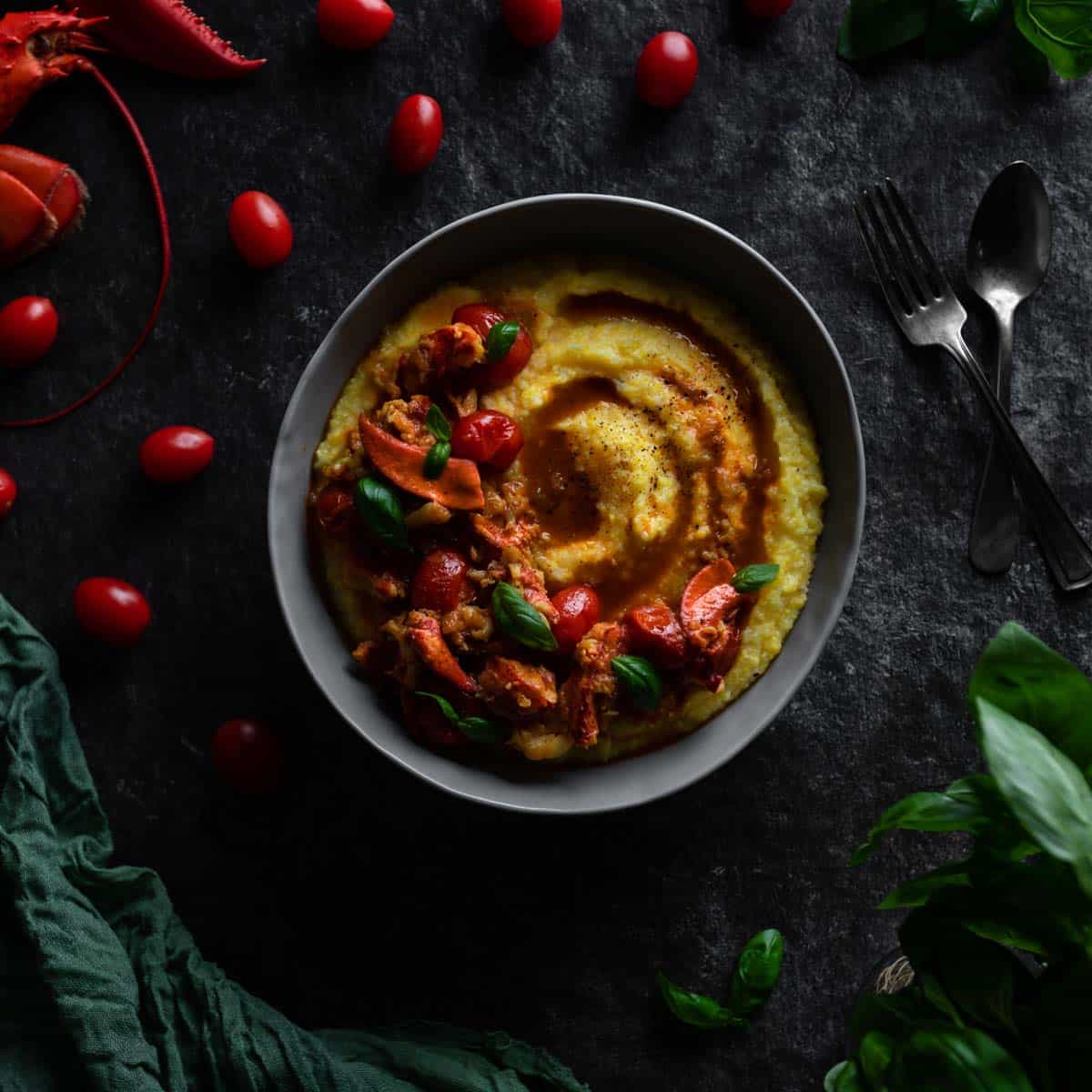
The Heads & Tails of Cooking with Live Lobster
Nothing compares to the sweet, tender meat of fresh Maine lobster. As a New England girl, I’ve been enjoying this delicacy all of my life. Here is all of my best advice for preparing live lobsters for this Lobster and Grits with Saffron recipe!
What to Look for When Buying Live Lobster
Buying live lobster can seem like a bit of an undertaking! However, we assure you, fresh lobster is always superior to pre-frozen lobster. In a pinch, lobster tails and purchased stock will work for this recipe. That being said, the full-flavored, crave-able Lobster Saffron Sauce is best made from the shells and bodies of fresh-from-the-sea crustaceans. Here’s what to look for when buying fresh lobster:
- Reputable seafood vendor - Buy lobster that is as fresh as possible. The closer to the ocean, usually the better. That being said, we can get fresh, live lobsters all the way in landlocked Colorado. Choose a busy, well-known seafood vendor with a proper lobster tank and feel free to ask when they got them in. Lobster is expensive so, be wary. Even live lobsters will begin to lose their sweetness after a few days from the ocean waters.
- Responsive lobsters - Healthy live lobsters will react to being picked up and/or moved around. Look for lobsters that are responsive to their environment.
- Shells in tact - Take a look to make sure the lobsters shells are in tact and appear healthy. Don’t ever buy lobsters with damaged or broken shells. (A missing claw can happen in an under-the-sea skirmish from time to time, but don’t you want a lobster with BOTH claws!? Of course, you do.) Lobster shells are not red until boiled so, don’t worry too much about the coloring.
- Check for long antennas - Lobster antennas can be a good indicator of freshness. Look for lobsters with two, long antennas that are free from damage.
Parboiling: The Why & How
There are a handful of ways you can cook live lobsters. For an old-fashioned Maine dinner, we recommend steaming. However, for this Lobster and Grits recipe, parboiling the lobsters is the best choice. The process is quick and will ensure you can avoid any overcooked, tough or rubbery lobster. Parboiling ensures sweet, tender chunks of lobster, fresh out of the sea!
Par boiling the lobsters will allow the lobster to cook long enough that the meat easily releases from the shell. Meanwhile, you can ensure that you don’t overcook the lobster, either. The lobster meat will finish cooking later, directly in the Lobster Saffron Sauce.
Parboiling Lobster Step-by-Step
- Fill a large stock pot with water and bring to a roaring boil. Salt generously until the salinity is reminiscent of ocean water.
- Then, drop lobsters, one at a time, headfirst into water. Be very cautious. The lobsters will sometimes react by flipping their tails and splashing the boiling water. Stand back, drop confidently and submerge in the water as safe and quickly as possible. Do not overcrowd the pot. Our largest pot fits two 1 ¼ - 1 ½ lobsters comfortably. Cook in batches whenever necessary.
- Allow the water to return to a roaring boil. Once boiling rapidly, cook lobsters 2 - 4 minutes, depending on thickness of shell. Soft shell lobsters (available July - November) will parboil quickly, in about two minutes. Hard shell lobsters (available November - July) will require slightly longer cooking, about four minutes.
- With tongs, remove the now-red lobsters from the boiling water and submerge in an ice bath. The cool ice water will immediately stop the lobsters from cooking and keep the meat tender and sweet.
- Once cooled, use a sharp knife to pierce the shell by the tail. Hold the lobster up to drain the shell of any water acquired from the boiling process. Finally, use lobster crackers, a knife, or rolling pin to crack the lobster shells. (If you’ve never cracked your own lobster, it can be rather laborious! Check out Gordon Ramsey leaving no morsel of meat behind is this quick video. Reserve the lobster meat in the refrigerator. Meanwhile, save all of the shells, bodies, juices and tomalley for the Lobster Stock.
Roe & Tomalley: The Inside Scoop
If you’ve never experienced a true New England Lobster dinner, you may be surprised by your lobster’s insides. I’ll be the first to admit...it’s not exactly pretty. It IS, however, absolutely delicious! Here’s the details on what exactly is going on in there:
The Green Stuff (The Good Stuff)
Ah, the green stuff. Don’t worry, it’s not poop. We’re not there yet. Instead, the green paste-like substance found in the body of a Maine lobster is called tomalley. Tomalley is the equivalent of a lobster’s liver and while it may not look totally appetizing... tomalley is Chef’s gold.
Tomalley is a delicacy packed with intense lobster flavor. It’s great as is, on toast or in sauces. In this Lobster and Grits with Saffron recipe, tomalley is key to a richly flavored lobster stock. Throw it right in the pot with the shells and allow it to simmer away. Don’t worry, the stock will be strained of all the bits and pieces and you will be left with a perfectly smooth lobster concentrate.
If you decide the tomalley just isn’t for you, that’s okay too. You can simply rinse the lobster body free of tomalley under cold running water before making the stock.
The Black Stuff (If You’re Lucky!)
Even lobster aficionados may be less familiar with the black stuff sometimes found inside the lobster. Well...at least in this state, anyway. If you crack open your parboiled Maine lobster to find it filled with gelatinous black gel...fear not! Your lobster has not spoiled. To the contrary, some may argue you’ve struck the lobster lottery!
Female lobsters will be filled with reproductive eggs, commonly known as roe or coral. Don’t worry, these eggs are not fertilized (lobster fishermen see BIG fines for harvesting pregnant lobsters). Instead, this roe is a natural part of the female lobster’s anatomy.
This lobster roe, or coral, is essentially lobster caviar and has tremendous lobster flavor. When it’s fully cooked, the roe will turn to tiny bright orange spheres. When parboiled, as in this recipe, your lobster will be undercooked and the roe will still appear black and gel-like.
If you are lucky enough to get a female lobster for this recipe, you can add the black, undercooked roe directly into the stock pot with the shells. The roe will cook quickly (turning orange) and add great flavor to your stock. If you’d like, go ahead and ask for a female lobster at your local seafood vendor. A great vendor will know the small differences in male and female lobster’s appearances.
The Remove-ables
Now that we got the good stuff out of the way, let’s mention the unmentionables. Remember that book, Everyone Poops? Well, lobsters do too. Here’s how to take care of that buisness:
- To remove the digestive tract, start with your cooked or parboiled lobster. Twist the tail from the body to remove it.
- Then, remove the flippers from the tail’s end. You should be able to snap them off with your fingers, but you can use kitchen shears, if preferred.
- With a fork inserted in the flipper end, gently push the lobster tail out of the shell. It should come out in one piece.
- The dark digestive track will run down the center of the lobster tail. Use a pairing knife to gently slice along one side of the dark digestive track. Remove with the back of the knife or rinse under cold running water.
Also, for the best results, you’ll want to remove the lobster’s grain sac. The grain sac, sometimes called head sac, is essentially the lobster’s stomach and can be filled with grit, shells and sand. This sac is a small part of the lobster found in the head, just behind the eyes. Once the body has been opened, the sac should be visible and can be removed with a knife or spoon.
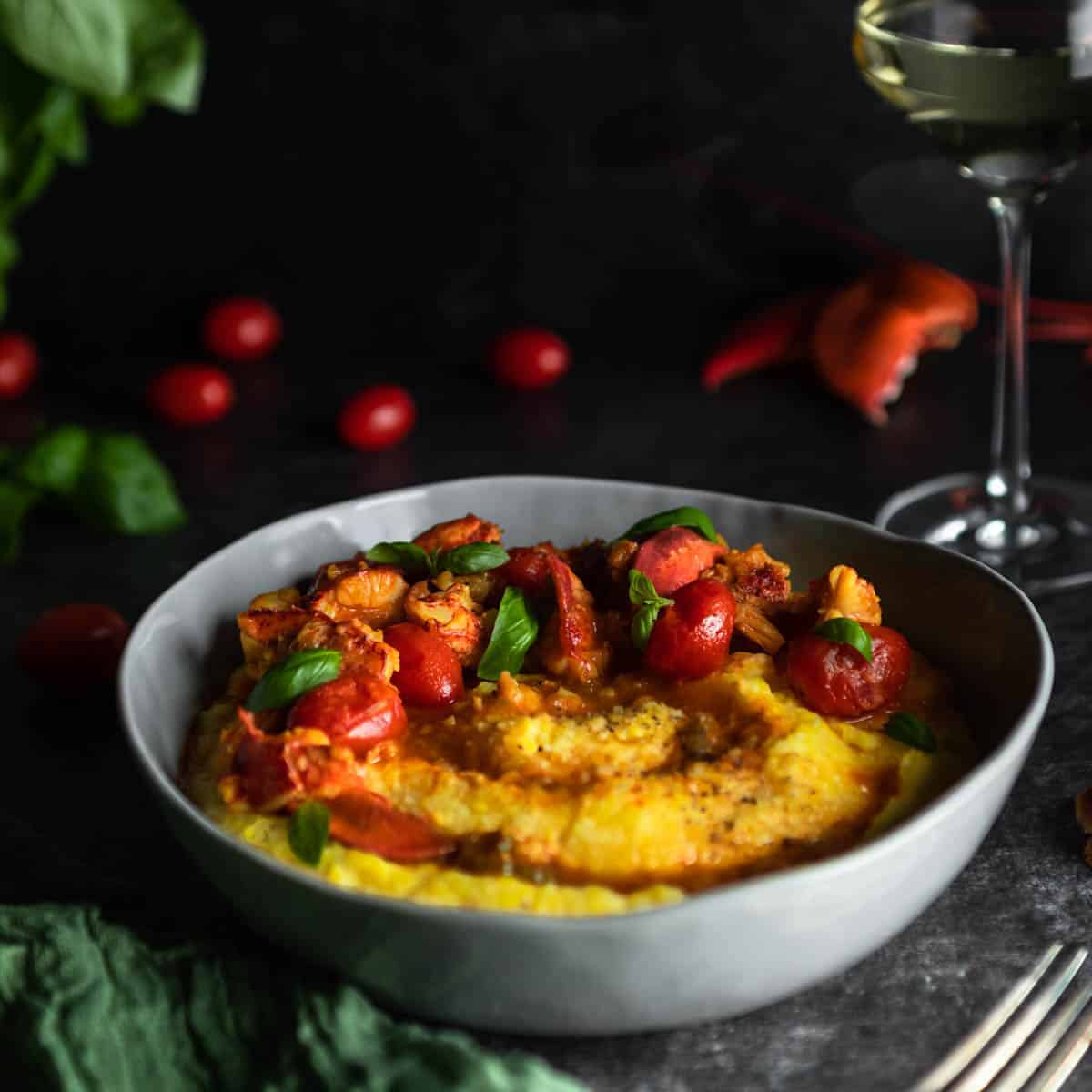
How To Make Lobster Stock
Like most stocks, lobster stock is a flavorful soup made from the most humble of ingredients. In fact, the stock gets most of it’s flavor from the lobster’s shells and bodies that one may otherwise discard. By slowly simmering these shells with a few aromatics and water, these ingredients are transformed into a fully flavored stock that serves as the base of the Lobster Saffron Sauce for this Lobster and Grits recipe. Here’s the basic process, check out the full recipe below.
- When cracking your lobster, do so over a bowl to capture all the lobster’s juices. Reserve all of the shells, bodies, legs, tomalley and roe (if you have it!). Set aside.
- In a large stock pot, sauté your aromatic vegetables until fragrant. Add in all of your reserved lobster shells, juices and parts.
- Fill pot with cold water and bring to a boil. Reduce heat to simmer. Allow to simmer for four or more hours until liquid had reduced and is full of delicious lobster-y flavor! Lobster stock can be made ahead of time and keeps well in the freezer for up to two months.
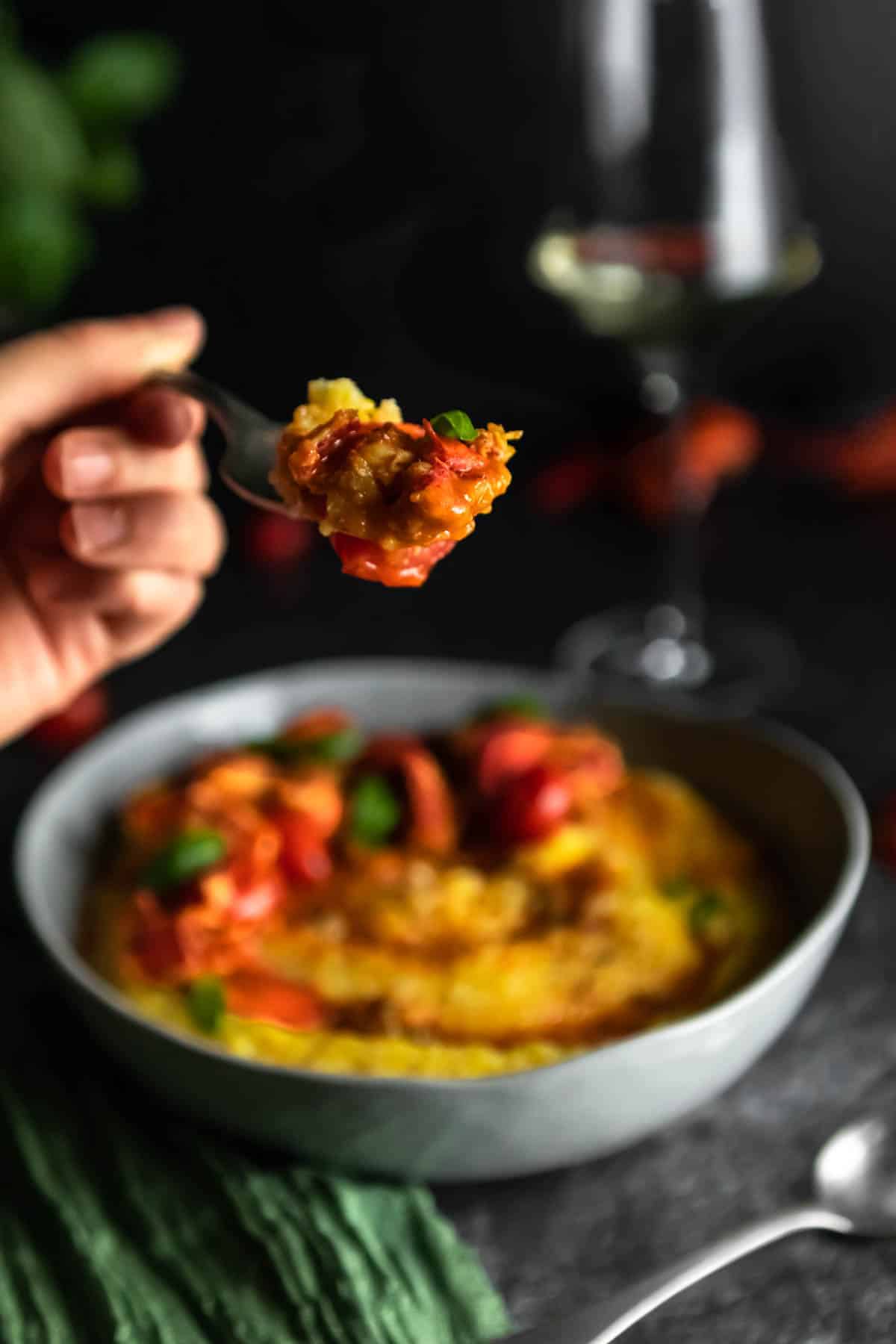
Grits Vs. Polenta - The Nitty Gritty of Cornmeal Porridge
What’s the difference between grits and polenta anyway!? To be honest? Not a lot. Both grits and polenta are forms of ground cornmeal. (Naturally gluten free!) While grits, popular in the Southern United States tend to be made from finely ground white corn...Italy’s famed polenta tends to be a bit coarser ground yellow corn. Truth be told, we enjoy them both and either grits or polenta will work well for this recipe.
Depending on the brand and style you choose, grits and polenta may require different cooking times. Cook your polenta or grits according to package instructions. We recommend cooking either option in milk, rather that water, for an even creamier texture. The creamy grits are the perfect vessel for saucy bites of Maine lobster meat cloaked in a Saffron Lobster Sauce.
Saffron: A Thread of Elegance
With a few threads of saffron you’ll be feasting like a King and Queen! Saffron is known as the world’s most-expensive spice by weight. Don’t worry, you’ll only need a tiny pinch and dried saffron is available in most grocery stores. Saffron is actually the stigma of a small, Middle Eastern/Mediterranean crocus flower.
These flowers have three tiny, crimson-colored stigmas that are carefully harvested and dried. Can you imagine the tedious work!? No wonder it’s so pricey. That being said, a little pinch of saffron pairs exquisitely with shellfish. The small addition of saffron to this recipe adds a lovely, luxurious flavor and mouth-watering aromatics.
You May Also Like...
Recipe
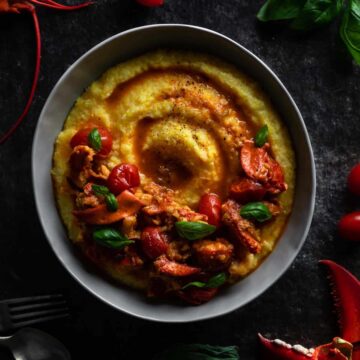
Lobster and Grits with Saffron
ADJUST SERVINGS
Special Equipment
- Large Stock Pot
- Fine-Mesh Strainer
Ingredients
Lobster and Grits with Saffron
- Water for boiling and chilling lobsters, as needed
- Sea or kosher salt for boiling lobsters, as desired
- 4 live Maine lobsters 550 - 650 grams or 1 ¼ pounds each
- Ice as needed
- 1 quart Lobster Stock
- 1 recipe Saffron Lobster Sauce
- 4 servings prepared Grits (6 Cups)
- Fresh basil optional, for garnish
Lobster Stock
- 1 Tablespoon olive oil
- 1 medium shallot quartered
- 1 clove garlic lightly smashed
- 2 stalks celery chopped into 2 inch (5 centimeter) pieces
- ½ teaspoon black peppercorns
- ½ teaspoon fine kosher salt*
- 4 Maine Lobsters Bodies, shells, tomalley, roe (if applicable) and juices (See Roe & Tomalley: The Inside Scoop text above, for more information)
- 1 dried bay leaf
- 6 quarts cold water plus more, as needed
Saffron Lobster Sauce
- 2 Tablespoons olive oil
- 2 Cups 10 ounce package grape or cherry tomatoes
- 1 medium shallot small diced
- 2 stalks celery thinly sliced
- 1 clove garlic minced
- ½ teaspoon smoked paprika
- Pinch of saffron
- 1 Tablespoon tomato paste
- ½ Cup dry sherry cooking wine
- 1 quart Lobster Stock
- Lobster meat from 4 Maine Lobsters chopped
- 4 Tablespoons unsalted butter
- fine kosher salt* to taste
Grits (See Note: a)
- 1½ Cups stone ground grits or polenta
- 6 Cups milk, water or a combination of the two (See Note: b)
- 4 Tablespoons unsalted butter
- fine kosher salt* to taste
Instructions
Lobster and Grits (Parboiling Lobsters)
- Gather Lobsters, salt, water and ice for parboiling. See How to Parboil Lobsters text above, for more information. To view metric measurements, toggle the US Customary/Metric switch at the top of this recipe card.
- Fill a large stock or lobster pot with water and bring to a rapid boil over high heat. Generously add salt to season the water. Meanwhile, set up a large bowl or additional pot with ice and water. You will transfer the cooked lobsters to this ice bath to stop cooking and cool.
- Once the salted water is boiling, add lobsters to the pot, head first, one at a time. Do not overcrowd the pot. Cook in batches, as necessary. Return water to a rapid boil. Once boiling rapidly, cook lobsters for 2 - 4 minutes. Soft shell lobsters (available July - November) will need less time, about 2 - 3 minutes. Hard shell lobsters (available November - July) will parboil in four minutes.
- Using a pair of tongs, remove lobsters from the boiling water, one at a time. Immediately transfer lobsters to the ice water bath. Repeat, as necessary, until all four lobsters are parboiled and cooling in ice water.
- Once the lobsters have cooled, shell the lobsters. Crack lobster shells over a large bowl to capture any juices. Remove and discard the lobsters grain sac (otherwise known as head sac) and digestive tracts. Reserve all of the lobsters shells, bodies, tomalley, and roe (if applicable) to use in the Lobster Stock. Chop the lobster meat into large bite-sized pieces and refrigerate for the time being.
- Next, prepare the lobster stock.
Lobster Stock
- Gather, measure and prepare the Lobster Stock ingredients as listed.
- In a large stock pot, heat olive oil over medium heat until shimmering (showing wavy lines and flowing like water). Add shallot, garlic and celery and cook until aromatic, about 2 minutes. Add black peppercorns and salt and stir to combine.
- Add lobster bodies, shells, tomalley, roe (if applicable) and juices to the pot. Continue to cook for 2 - 3 minutes. If you are using lobster with roe (coral), the roe will turn from black to orange during this time. Add the bay leaf.
- Cover the contents of the pot with cold water. Bring water to a boil and reduce to simmer. Allow stock to simmer for four or more hours or until the water has reduced to about 1 liter or quart. The stock should be deeply colored and very concentrated. Allow the stock to cool. Strain Lobster Stock through a fine mesh strainer. Discard the shells and bodies. Set stock aside or refrigerate until ready to use. The stock can be cooked on very low heat overnight, or be prepared a day ahead of time.
Saffron Lobster Sauce
- Gather, measure and prepare the Saffron Lobster Sauce ingredients as listed.
- In a large, heavy-bottomed skillet, heat olive oil over high heat until shimmering. Add tomatoes and cook, undisturbed, for 1 - 2 minutes or until blistering. (See Note: c.) Remove tomatoes from pan and lower heat to medium - low. Allow the oil to cool for a couple minutes before proceeding.
- Add shallot and celery to the skillet and sauté until shallot is translucent, about 2 minutes. Add garlic, paprika and saffron and sauté for one additional minute. Add tomato paste and stir in until well combined.
- Increase the heat to medium - high. Add dry cooking sherry and whisk to combine. Cook until the alcohol has burned off and the pan is nearly dry. Stream lobster stock into the pan while whisking. Bring to a boil and reduce heat to simmer. Simmer sauce, whisking occasionally until it has reduced by half.
- Once the sauce has reduced and is beginning to thicken, add reserved lobster meat and blistered tomatoes to the pan. Sauté the lobster meat in the Saffron Lobster Sauce for 2 - 3 minutes until brightly colored and just cooked. Do not overcook.
- Remove the sauce from the heat and whisk in butter until emulsified. Season with salt to taste.
- Meanwhile, prepare the grits.
Grits
- Gather, measure and prepare the Grits ingredients as listed.
- Prepare grits or polenta according to package instructions. Once prepared, stir in butter and salt, to taste.
Plating & Serving Lobster and Grits
- Portion prepared grits or polenta into four (or more) bowls. We like to swirl (or create a well in the center) of the grits to better hold the sauce.
- Top each portion of grits with equal portions of lobster meat and blistered tomatoes. Pour any additional Lobster Saffron Sauce over each bowl.
- Garnish Lobster and Grits with Saffron with fresh basil leaves, as desired. Serve immediately. Enjoy!
Notes
* A Note About Salt
Unless otherwise noted, all recipes on The Sage Apron are developed using Diamond Crystal Kosher salt. It is a great all-purpose salt for cooking and baking. If using table salt, reduce quantities by about half.


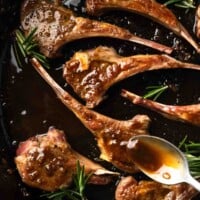
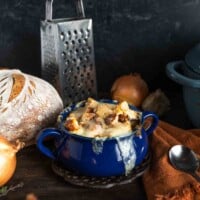

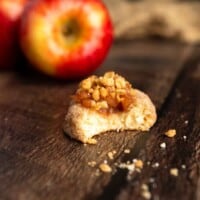

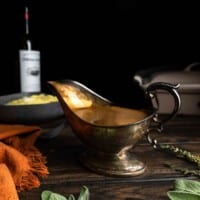
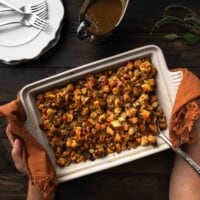

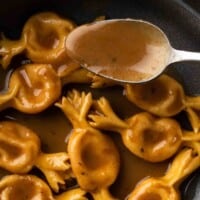



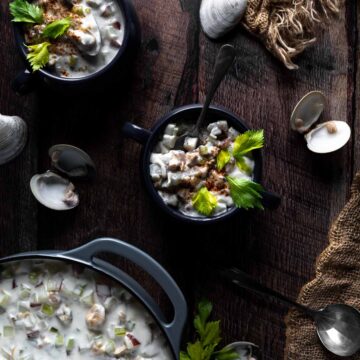
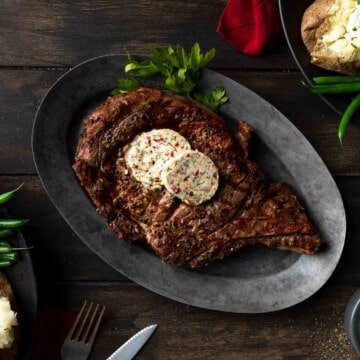
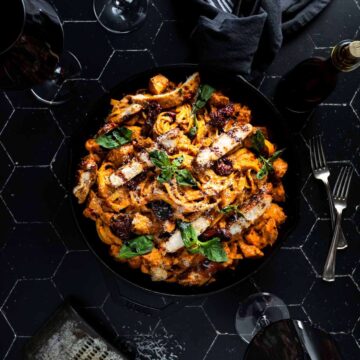
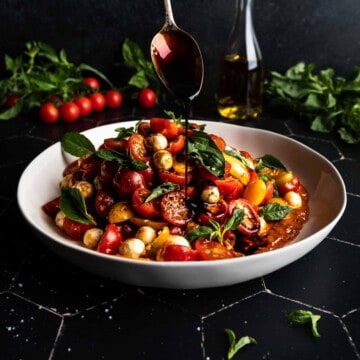
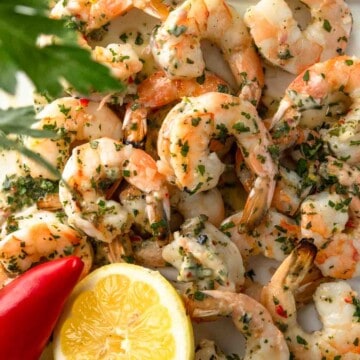
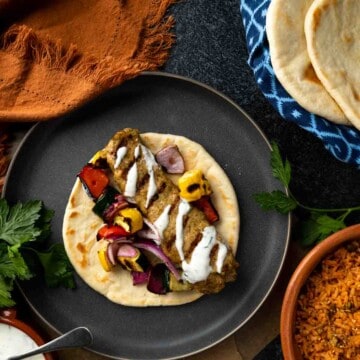
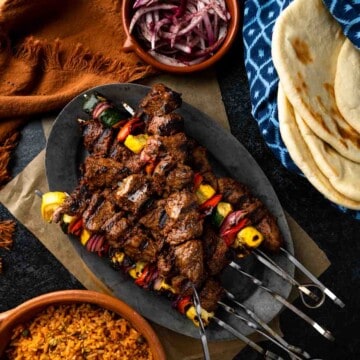
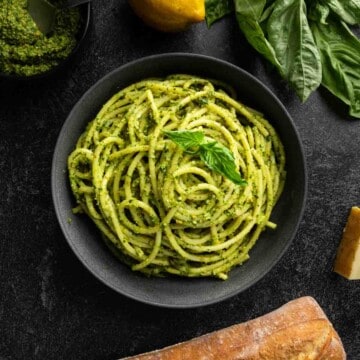
Logan says
This was a really well written up recipe, and it packs a lot of flavor! I'd never had grits with saffron before, and this was a delight!
foodworthfeed says
Logan, thank you so much for commenting! You made our day! I'm so glad you liked the recipe!